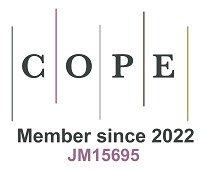REFERENCES
1. Jucker M, Walker LC. Self-propagation of pathogenic protein aggregates in neurodegenerative diseases. Nature 2013;501:45-51.
2. Wilson DM 3rd, Cookson MR, Van Den Bosch L, Zetterberg H, Holtzman DM, Dewachter I. Hallmarks of neurodegenerative diseases. Cell 2023;186:693-714.
3. Li D, Liu C. Hierarchical chemical determination of amyloid polymorphs in neurodegenerative disease. Nat Chem Biol 2021;17:237-45.
4. Milanesi L, Sheynis T, Xue WF, et al. Direct three-dimensional visualization of membrane disruption by amyloid fibrils. Proc Natl Acad Sci U S A 2012;109:20455-60.
5. Engel MF, Khemtémourian L, Kleijer CC, et al. Membrane damage by human islet amyloid polypeptide through fibril growth at the membrane. Proc Natl Acad Sci U S A 2008;105:6033-8.
6. Meda L, Cassatella MA, Szendrei GI, et al. Activation of microglial cells by beta-amyloid protein and interferon-gamma. Nature 1995;374:647-50.
7. Mahul-Mellier AL, Burtscher J, Maharjan N, et al. The process of Lewy body formation, rather than simply α-synuclein fibrillization, is one of the major drivers of neurodegeneration. Proc Natl Acad Sci U S A 2020;117:4971-82.
8. Olzscha H, Schermann SM, Woerner AC, et al. Amyloid-like aggregates sequester numerous metastable proteins with essential cellular functions. Cell 2011;144:67-78.
9. Cuervo AM, Stefanis L, Fredenburg R, Lansbury PT, Sulzer D. Impaired degradation of mutant alpha-synuclein by chaperone-mediated autophagy. Science 2004;305:1292-5.
10. Peng C, Trojanowski JQ, Lee VM. Protein transmission in neurodegenerative disease. Nat Rev Neurol 2020;16:199-212.
11. van Dyck CH, Swanson CJ, Aisen P, et al. Lecanemab in early Alzheimer’s disease. N Engl J Med 2023;388:9-21.
12. Li D, Liu C. Conformational strains of pathogenic amyloid proteins in neurodegenerative diseases. Nat Rev Neurosci 2022;23:523-34.
13. Chiti F, Dobson CM. Protein misfolding, amyloid formation, and human disease: a summary of progress over the last decade. Annu Rev Biochem 2017;86:27-68.
14. Soto C, Pritzkow S. Protein misfolding, aggregation, and conformational strains in neurodegenerative diseases. Nat Neurosci 2018;21:1332-40.
15. Sawaya MR, Hughes MP, Rodriguez JA, Riek R, Eisenberg DS. The expanding amyloid family: structure, stability, function, and pathogenesis. Cell 2021;184:4857-73.
16. Haass C, Selkoe DJ. Soluble protein oligomers in neurodegeneration: lessons from the Alzheimer’s amyloid beta-peptide. Nat Rev Mol Cell Biol 2007;8:101-12.
17. Iadanza MG, Jackson MP, Hewitt EW, Ranson NA, Radford SE. A new era for understanding amyloid structures and disease. Nat Rev Mol Cell Biol 2018;19:755-73.
18. Li D, Liu C. Structural diversity of amyloid fibrils and advances in their structure determination. Biochemistry 2020;59:639-46.
19. Knowles TP, Vendruscolo M, Dobson CM. The amyloid state and its association with protein misfolding diseases. Nat Rev Mol Cell Biol 2014;15:384-96.
21. Ferrone FA, Hofrichter J, Eaton WA. Kinetics of sickle hemoglobin polymerization: II. a double nucleation mechanism. J Mol Biol 1985;183:611-31.
22. Ruschak AM, Miranker AD. Fiber-dependent amyloid formation as catalysis of an existing reaction pathway. Proc Natl Acad Sci U S A 2007;104:12341-6.
23. Thacker D, Sanagavarapu K, Frohm B, Meisl G, Knowles TPJ, Linse S. The role of fibril structure and surface hydrophobicity in secondary nucleation of amyloid fibrils. Proc Natl Acad Sci U S A 2020;117:25272-83.
24. Almeida ZL, Brito RMM. Structure and aggregation mechanisms in amyloids. molecules 2020;25:1195.
25. Chiti F, Dobson CM. Protein misfolding, functional amyloid, and human disease. Annu Rev Biochem 2006;75:333-66.
26. Cohen FE, Kelly JW. Therapeutic approaches to protein-misfolding diseases. Nature 2003;426:905-9.
27. Hammarström P, Wiseman RL, Powers ET, Kelly JW. Prevention of transthyretin amyloid disease by changing protein misfolding energetics. Science 2003;299:713-6.
28. Razavi H, Palaninathan SK, Powers ET, et al. Benzoxazoles as transthyretin amyloid fibril inhibitors: synthesis, evaluation, and mechanism of action. Angew Chem Int Ed Engl 2003;42:2758-61.
29. Maurer MS, Schwartz JH, Gundapaneni B, et al. ATTR-ACT study investigators. tafamidis treatment for patients with transthyretin amyloid cardiomyopathy. N Engl J Med 2018;379:1007-16.
30. Bulawa CE, Connelly S, Devit M, et al. Tafamidis, a potent and selective transthyretin kinetic stabilizer that inhibits the amyloid cascade. Proc Natl Acad Sci U S A 2012;109:9629-34.
32. Gertz MA, Dispenzieri A. Systemic amyloidosis recognition, prognosis, and therapy: a systematic review. JAMA 2020;324:79-89.
33. Ruberg FL, Grogan M, Hanna M, Kelly JW, Maurer MS. Transthyretin amyloid cardiomyopathy: JACC state-of-the-art review. J Am Coll Cardiol 2019;73:2872-91.
34. Greene MJ, Klimtchuk ES, Seldin DC, Berk JL, Connors LH. Cooperative stabilization of transthyretin by clusterin and diflunisal. Biochemistry 2015;54:268-78.
35. Judge DP, Heitner SB, Falk RH, et al. Transthyretin stabilization by ag10 in symptomatic transthyretin amyloid cardiomyopathy. J Am Coll Cardiol 2019;74:285-95.
36. Ehrnhoefer DE, Bieschke J, Boeddrich A, et al. EGCG redirects amyloidogenic polypeptides into unstructured, off-pathway oligomers. Nat Struct Mol Biol 2008;15:558-66.
37. Muschol M, Hoyer W. Amyloid oligomers as on-pathway precursors or off-pathway competitors of fibrils. Front Mol Biosci 2023;10:1120416.
38. Ahmed R, VanSchouwen B, Jafari N, Ni X, Ortega J, Melacini G. Molecular mechanism for the (-)-epigallocatechin gallate-induced toxic to nontoxic remodeling of aβ oligomers. J Am Chem Soc 2017;139:13720-34.
39. Acharya S, Safaie BM, Wongkongkathep P, et al. Molecular basis for preventing α-synuclein aggregation by a molecular tweezer. J Biol Chem 2014;289:10727-37.
40. Sinha S, Lopes DH, Du Z, et al. Lysine-specific molecular tweezers are broad-spectrum inhibitors of assembly and toxicity of amyloid proteins. J Am Chem Soc 2011;133:16958-69.
41. Ladiwala AR, Lin JC, Bale SS, et al. Resveratrol selectively remodels soluble oligomers and fibrils of amyloid Abeta into off-pathway conformers. J Biol Chem 2010;285:24228-37.
42. Ladiwala AR, Dordick JS, Tessier PM. Aromatic small molecules remodel toxic soluble oligomers of amyloid beta through three independent pathways. J Biol Chem 2011;286:3209-18.
43. Langenberg T, Gallardo R, van der Kant R, et al. Thermodynamic and evolutionary coupling between the native and amyloid state of globular proteins. Cell Rep 2020;31:107512.
44. Young LM, Ashcroft AE, Radford SE. Small molecule probes of protein aggregation. Curr Opin Chem Biol 2017;39:90-9.
45. Pujols J, Peña-Díaz S, Pallarès I, Ventura S. Chemical chaperones as novel drugs for parkinson’s disease. Trends Mol Med 2020;26:408-21.
46. Seidler PM, Murray KA, Boyer DR, et al. Structure-based discovery of small molecules that disaggregate Alzheimer’s disease tissue derived tau fibrils in vitro. Nat Commun 2022;13:5451.
47. Murray KA, Hu CJ, Pan H, et al. Small molecules disaggregate alpha-synuclein and prevent seeding from patient brain-derived fibrils. Proc Natl Acad Sci U S A 2023;120:e2217835120.
48. Yanagisawa D, Shirai N, Amatsubo T, et al. Relationship between the tautomeric structures of curcumin derivatives and their Abeta-binding activities in the context of therapies for Alzheimer’s disease. Biomaterials 2010;31:4179-85.
49. Yang F, Lim GP, Begum AN, et al. Curcumin inhibits formation of amyloid beta oligomers and fibrils, binds plaques, and reduces amyloid in vivo. J Biol Chem 2005;280:5892-901.
50. Rane JS, Bhaumik P, Panda D. Curcumin inhibits tau aggregation and disintegrates preformed tau filaments in vitro. J Alzheimers Dis 2017;60:999-1014.
51. Yang H, Zeng F, Luo Y, Zheng C, Ran C, Yang J. Curcumin scaffold as a multifunctional tool for alzheimer’s disease research. Molecules 2022;27:3879.
52. Zhao LN, Chiu SW, Benoit J, Chew LY, Mu Y. The effect of curcumin on the stability of Aβ dimers. J Phys Chem B 2012;116:7428-35.
53. Jakubowski JM, Orr AA, Le DA, Tamamis P. Interactions between curcumin derivatives and amyloid-β fibrils: insights from molecular dynamics simulations. J Chem Inf Model 2020;60:289-305.
54. Umeda T, Sakai A, Shigemori K, Yokota A, Kumagai T, Tomiyama T. Oligomer-targeting prevention of neurodegenerative dementia by intranasal rifampicin and resveratrol combination - a preclinical study in model mice. Front Neurosci 2021;15:763476.
55. Ge JF, Qiao JP, Qi CC, Wang CW, Zhou JN. The binding of resveratrol to monomer and fibril amyloid beta. Neurochem Int 2012;61:1192-201.
56. Reinke AA, Gestwicki JE. Structure-activity relationships of amyloid beta-aggregation inhibitors based on curcumin: influence of linker length and flexibility. Chem Biol Drug Des 2007;70:206-15.
57. Sánchez-Pulido L, Devos D, Valencia A. BRICHOS: a conserved domain in proteins associated with dementia, respiratory distress and cancer. Trends Biochem Sci 2002;27:329-32.
58. Cohen SIA, Arosio P, Presto J, et al. A molecular chaperone breaks the catalytic cycle that generates toxic Aβ oligomers. Nat Struct Mol Biol 2015;22:207-13.
59. Willander H, Presto J, Askarieh G, et al. BRICHOS domains efficiently delay fibrillation of amyloid β-peptide. J Biol Chem 2012;287:31608-17.
60. Andrade-Talavera Y, Chen G, Kurudenkandy FR, Johansson J, Fisahn A. Bri2 BRICHOS chaperone rescues impaired fast-spiking interneuron behavior and neuronal network dynamics in an AD mouse model in vitro. Neurobiol Dis 2021;159:105514.
61. Wentink AS, Nillegoda NB, Feufel J, et al. Molecular dissection of amyloid disaggregation by human HSP70. Nature 2020;587:483-8.
62. Pohl C, Dikic I. Cellular quality control by the ubiquitin-proteasome system and autophagy. Science 2019;366:818-22.
63. Faust O, Abayev-Avraham M, Wentink AS, et al. HSP40 proteins use class-specific regulation to drive HSP70 functional diversity. Nature 2020;587:489-94.
64. Wani A, Al Rihani SB, Sharma A, et al. Crocetin promotes clearance of amyloid-β by inducing autophagy via the STK11/LKB1-mediated AMPK pathway. Autophagy 2021;17:3813-32.
65. Parekh P, Sharma N, Gadepalli A, Shahane A, Sharma M, Khairnar A. A cleaning crew: the pursuit of autophagy in parkinson’s disease. ACS Chem Neurosci 2019;10:3914-26.
66. Vingtdeux V, Chandakkar P, Zhao H, d’Abramo C, Davies P, Marambaud P. Novel synthetic small-molecule activators of AMPK as enhancers of autophagy and amyloid-β peptide degradation. FASEB J 2011;25:219-31.
67. Auluck PK, Chan HY, Trojanowski JQ, Lee VM, Bonini NM. Chaperone suppression of alpha-synuclein toxicity in a Drosophila model for Parkinson’s disease. Science 2002;295:865-8.
68. Hu S, Tan J, Qin L, et al. Molecular chaperones and Parkinson’s disease. Neurobiol Dis 2021;160:105527.
69. Vogiatzi T, Xilouri M, Vekrellis K, Stefanis L. Wild type alpha-synuclein is degraded by chaperone-mediated autophagy and macroautophagy in neuronal cells. J Biol Chem 2008;283:23542-56.
70. Sreenivasmurthy SG, Iyaswamy A, Krishnamoorthi S, et al. Bromo-protopine, a novel protopine derivative, alleviates tau pathology by activating chaperone-mediated autophagy for Alzheimer’s disease therapy. Front Mol Biosci 2022;9:1030534.
71. Tiwari S, Atluri V, Kaushik A, Yndart A, Nair M. Alzheimer’s disease: pathogenesis, diagnostics, and therapeutics. Int J Nanomedicine 2019;14:5541-54.
72. Anand P, Kunnumakkara AB, Newman RA, Aggarwal BB. Bioavailability of curcumin: problems and promises. Mol Pharm 2007;4:807-18.
73. Shimazu R, Anada M, Miyaguchi A, Nomi Y, Matsumoto H. Evaluation of blood-brain barrier permeability of polyphenols, anthocyanins, and their metabolites. J Agric Food Chem 2021;69:11676-86.
75. Wong KH, Xie Y, Huang X, et al. Delivering crocetin across the blood-brain barrier by using γ-cyclodextrin to treat alzheimer’s disease. Sci Rep 2020;10:3654.
76. Han L, Jiang C. Evolution of blood-brain barrier in brain diseases and related systemic nanoscale brain-targeting drug delivery strategies. Acta Pharm Sin B 2021;11:2306-25.
77. Mangano K, Klepacki D, Ohanmu I, et al. Inhibition of translation termination by the antimicrobial peptide Drosocin. Nat Chem Biol 2023;19:1082-90.
78. Ibrahim M, Saint Croix GR, Lacy S, et al. The use of diflunisal for transthyretin cardiac amyloidosis: a review. Heart Fail Rev 2022;27:517-24.
79. Caruana M, Vassallo N. Tea Polyphenols in Parkinson’s Disease. In: Vassallo N, editor. Natural Compounds as Therapeutic Agents for Amyloidogenic Diseases. Cham: Springer International Publishing; 2015. p. 117-37.
80. Shankar GM, Li S, Mehta TH, et al. Amyloid-beta protein dimers isolated directly from Alzheimer’s brains impair synaptic plasticity and memory. Nat Med 2008;14:837-42.
81. Winner B, Jappelli R, Maji SK, et al. In vivo demonstration that alpha-synuclein oligomers are toxic. Proc Natl Acad Sci U S A 2011;108:4194-9.
82. Passeri E, Elkhoury K, Morsink M, et al. Alzheimer’s disease: treatment strategies and their limitations. Int J Mol Sci 2022;23:13954.
83. Andrade-Talavera Y, Arroyo-García LE, Chen G, Johansson J, Fisahn A. Modulation of Kv3.1/Kv3.2 promotes gamma oscillations by rescuing Aβ-induced desynchronization of fast-spiking interneuron firing in an AD mouse model in vitro. J Physiol 2020;598:3711-25.







